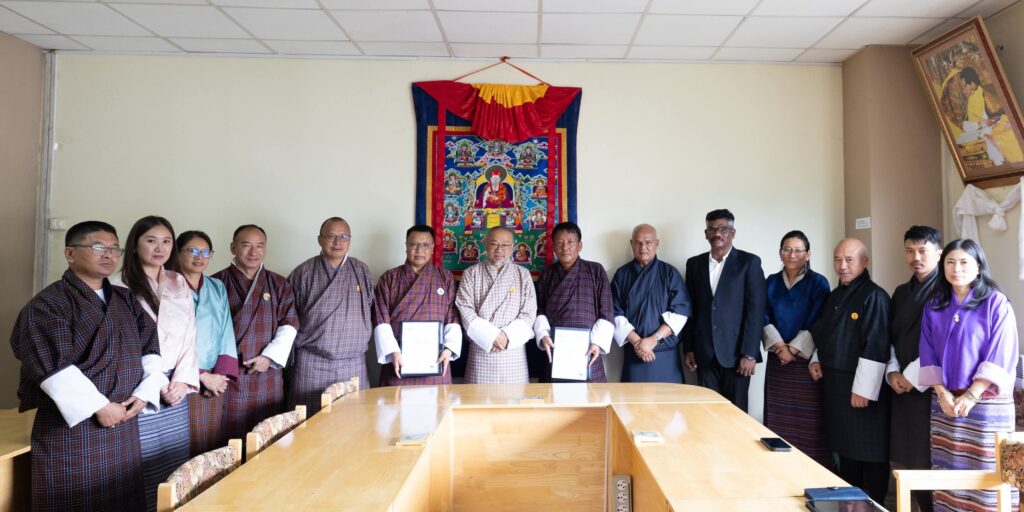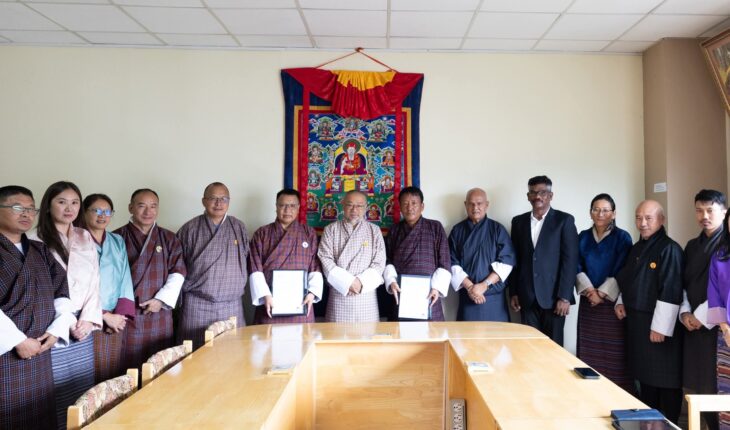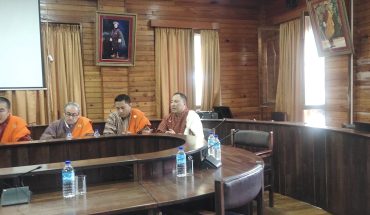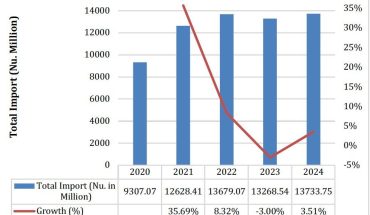
TIL BDR GHALLEY
Thimphu
Druk Green Power Corporation Limited (DGPC) has awarded the contract for Bhutan’s first and largest utility-scale solar photovoltaic (PV) project to the HILD-Rigsar Consortium, marking a major milestone in the country’s renewable energy transition.
The 120 megawatt-peak (MWp) Jamjee Solar Project will be constructed in Jamjee, Mewang Gewog, under Thimphu Dzongkhag.
The contract was signed on July 15, 2025, officially launching the project aimed at diversifying Bhutan’s energy portfolio and strengthening national power security.
According to DGPC, the selection followed a rigorous and competitive procurement process that began in January and concluded in June this year.
“The process adhered to the European Investment Bank’s stringent procurement guidelines and due diligence standards,” the corporation stated.
The project will be developed on approximately 385 acres of land at an altitude of 2,300 meters. Once operational, the plant is expected to generate an estimated 197 gigawatt-hours (GWh) of electricity annually.
DGPC noted, “The project will enhance the country’s energy security, particularly during dry seasons, and contribute to its transition to a diversified renewable energy portfolio.”
Valued at Nu. 4.35 billion, the project will be implemented under a turnkey Engineering, Procurement, and Construction (EPC) contract.
Construction is scheduled to be completed within 540 days from the date of contract signing. DGPC will retain full ownership of the project, with financing primarily secured through the European Investment Bank (EIB).
Power generated from the plant will be connected to Bhutan Power Corporation’s (BPC) 220/66/33 kV substation located nearby.
Integration into the national grid is expected to ensure reliable electricity supply, particularly during the winter months when hydropower generation typically declines due to reduced river flows.
DGPC awarded the contract to the HILD-Rigsar Consortium based on its technical expertise and robust track record in utility-scale solar projects.
“The consortium was selected based on its strong credentials, including a proven track record in utility-scale solar projects and specialized expertise in high-altitude installations,” DGPC stated.
Rigsar Construction Private Limited, the lead partner in the consortium, is also a key contractor in Bhutan’s 23 MW Sephu Solar Project. The company’s experience in executing solar plants in challenging terrain was cited as a major factor for its success.
Vice Chairman of Rigsar Construction, Sherub, said the company is proud to contribute to Bhutan’s renewable energy future through local expertise and innovation.
“Executing solar projects in Bhutan is not without its challenges ranging from rugged terrain to high altitudes and unpredictable weather. But these are challenges we are prepared to overcome through innovation and the empowerment of local talent,” he said.
He said the company is committed to delivering this project on schedule by leveraging advanced technologies and training over 120 Bhutanese engineers and technicians.
“Our long-term vision is to create a fully self-reliant national solar EPC ecosystem,” he added.
The Jamjee Solar Project is a key component of Bhutan’s long-term energy strategy. According to the National Energy Policy 2025, the country aims to develop 5,000 MW of solar power capacity by 2040 to meet growing domestic electricity demand, ensure seasonal supply reliability, and reduce overdependence on hydropower.
“This initiative directly aligns with Bhutan’s national objective to develop 5,000 MW of solar capacity by 2040,” the press release stated.
The project site was chosen for its high solar irradiance, favorable topography, and access to existing transmission infrastructure.
Feasibility studies and technical assessments were conducted in consultation with both local and international experts. The elevated location is expected to ensure stable generation throughout the year.
Beyond clean energy generation, the project is expected to create employment opportunities during construction and contribute to the development of national technical expertise in solar power. It will also serve as a model for integrating large-scale solar into Bhutan’s energy mix.
Historically, Bhutan has relied heavily on hydropower, which contributes significantly to the country’s electricity generation and export revenue.
However, increasing seasonal variability due to climate change and rising domestic demand have pushed the government to diversify into alternative renewable sources such as solar and wind.
Bhutan’s interest in solar energy accelerated in the early 2020s with support from international climate finance mechanisms. The successful implementation of pilot projects such as the Sephu Solar Plant helped establish technical viability and set the stage for larger-scale initiatives.
With the Jamjee project, Bhutan takes a significant step into utility-scale solar power generation, signalling a strategic shift toward a more resilient and diversified energy system.





